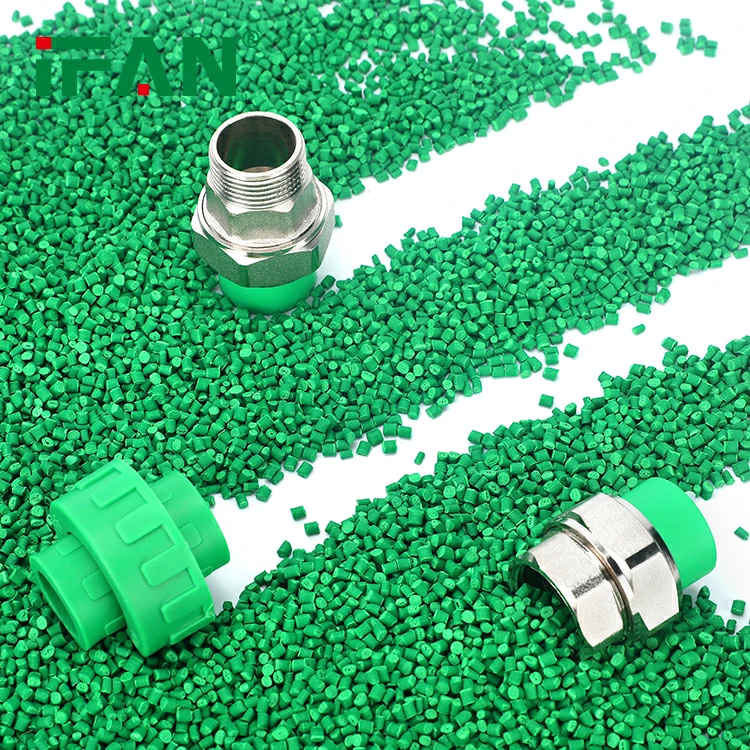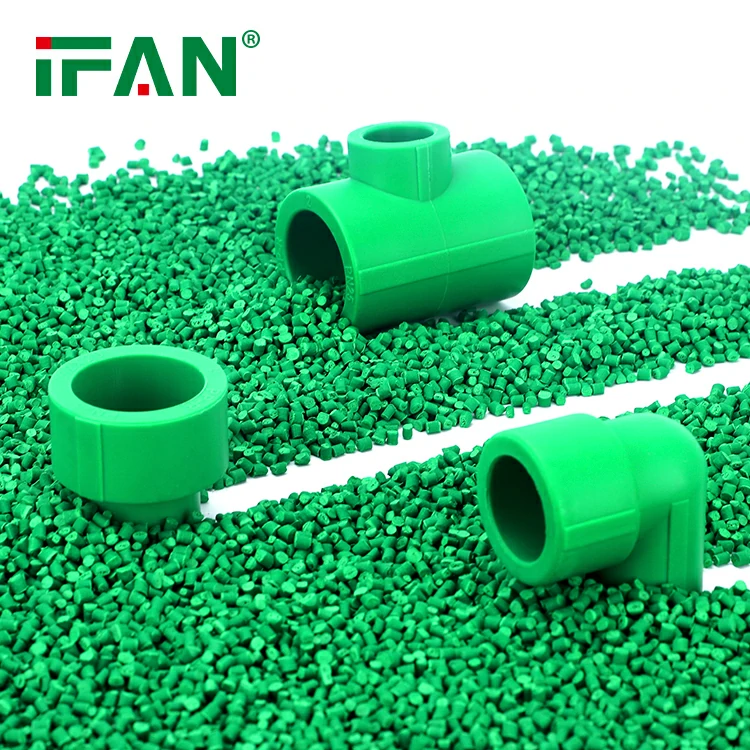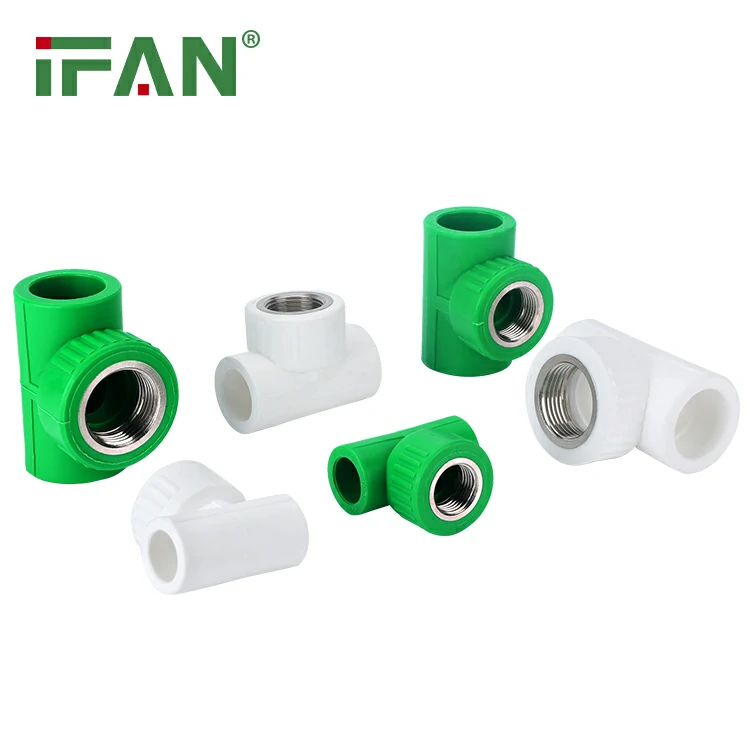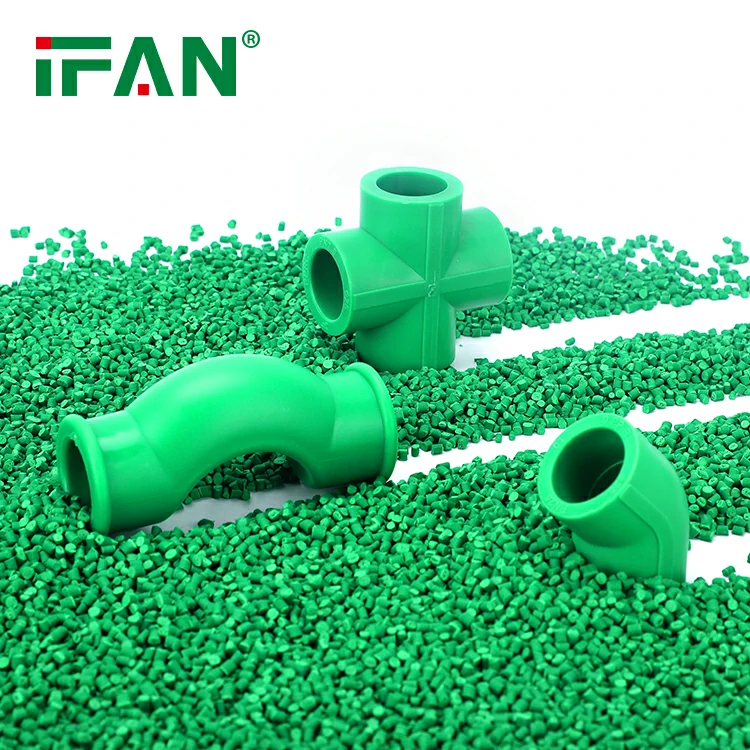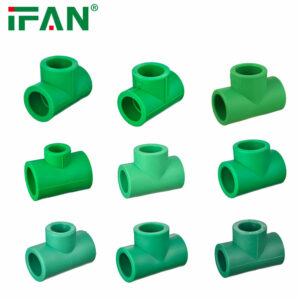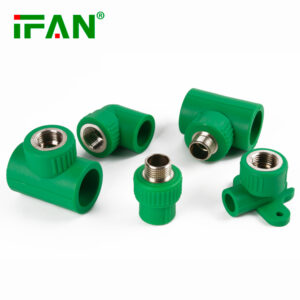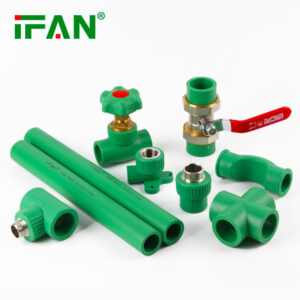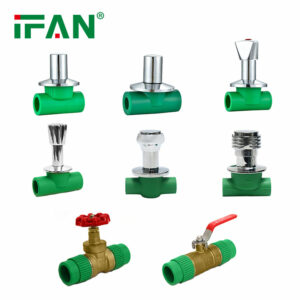Description
IFAN factory 30+ years manufacture experience support color /size customization support free sample.Welcome to consult for catalog and free samples.This is our Facebook Website:www.facebook.com,Click to watch IFAN’s product video.Compared with Tomex products, our IFAN products from quality to price are your best choice, welcome to buy!
When it comes to plumbing systems, PPR fittings (Polypropylene Random Copolymer fittings) are becoming increasingly popular due to their durability, resistance to corrosion, and ability to withstand high temperatures and pressures. Whether you are working on a residential or commercial plumbing project, selecting the right PPR fittings is crucial to ensuring the longevity and efficiency of your plumbing system. In this guide, we’ll explore essential factors to consider when choosing **PPR fittings** for your next plumbing project.
What Are PPR Fittings?
Before diving into how to choose the right PPR fittings, it’s important to understand what they are and why they are commonly used. PPR fittings are made from Polypropylene Random Copolymer, a durable thermoplastic material known for its resistance to high temperatures, chemicals, and pressure. These fittings are widely used in both cold and hot water plumbing systems due to their excellent performance and reliability.
PPR fittings are primarily used for connecting PPR pipes in water supply and heating systems. Their resistance to corrosion and scale buildup makes them a popular choice for plumbing applications where longevity is a priority.
Factors to Consider When Choosing PPR Fittings
Choosing the right **PPR fittings** can be a daunting task, especially with so many options available on the market. Here are the key factors you need to consider to ensure you make the right choice for your plumbing project.
1. Pipe Size and Compatibility
The most critical factor when selecting PPR fittings is ensuring that the size of the fitting matches the size of the pipe. PPR fittings come in a variety of sizes, and it’s important to choose fittings that are compatible with the specific PPR pipes you are using.
For instance, the diameter of the pipe will dictate the size of the fitting required. If the fitting is too large or too small for the pipe, it may lead to leaks, poor water flow, or even system failure. Always check the manufacturer’s specifications for both the PPR fittings and pipes to ensure they are compatible.
Tip: Use a pipe measuring tool or consult the product specifications to determine the correct pipe diameter for your project.
2. Pressure Rating
PPR fittings are designed to handle specific pressure levels, which vary depending on the type of fitting and the manufacturer’s specifications. It’s crucial to choose PPR fittings that match or exceed the required pressure rating for your plumbing system. Exceeding the pressure capacity can result in leaks or damage to the fittings and pipes.
Most PPR fittings are rated for pressures up to 20 bar (for residential use), but commercial or industrial systems may require fittings that can handle higher pressures. Always verify the pressure rating before purchasing **PPR fittings** for your plumbing system.
Tip: For high-pressure systems, ensure that the fittings you choose are rated for the maximum pressure your plumbing system will experience.
3. Temperature Resistance
PPR fittings are known for their excellent temperature resistance, making them suitable for both hot and cold water systems. However, it’s essential to consider the temperature requirements of your specific plumbing system. **PPR fittings** typically have a maximum operating temperature of around 95°C (203°F) for hot water systems.
If your plumbing system involves very high-temperature water (such as in industrial settings), you may need to opt for fittings specifically rated for higher temperatures. Ensure that the PPR fittings you select can withstand the required operating temperatures to prevent damage and maintain efficiency.
Tip: For hot water applications, always check the temperature tolerance of the **PPR fittings** to ensure they will perform optimally in your system.
4. Type of Connection (Threaded, Welded, or Push-fit)
PPR fittings come in various connection types, including threaded, welded, and push-fit connections. The connection type you choose depends on your project’s specific needs and installation preferences.
– Threaded connections are often used for applications that require easy disassembly or adjustment. They provide a secure seal but may require sealing tape or pipe joint compound to prevent leaks.
– Welded connections (or fusion fittings) are ideal for creating a seamless, leak-proof connection. These fittings are joined using heat fusion, creating a strong, permanent bond between the pipe and fitting.
– Push-fit connections are quick and easy to install, making them ideal for DIY projects or systems that need to be easily modified. These fittings offer a secure connection without the need for welding or threading.
Tip: Consider the ease of installation, maintenance, and potential for disassembly when choosing the type of connection for your plumbing system.
5. Quality and Brand Reputation
When it comes to plumbing components like PPR fittings, quality is paramount. Opt for fittings from well-known and reputable manufacturers who are recognized for producing high-quality, durable products. Poor-quality **PPR fittings** may deteriorate faster, leading to system failures, leaks, or contamination of the water supply.
Tip: Look for PPR fittings that meet international standards and certifications (such as ISO) to ensure their reliability and performance.
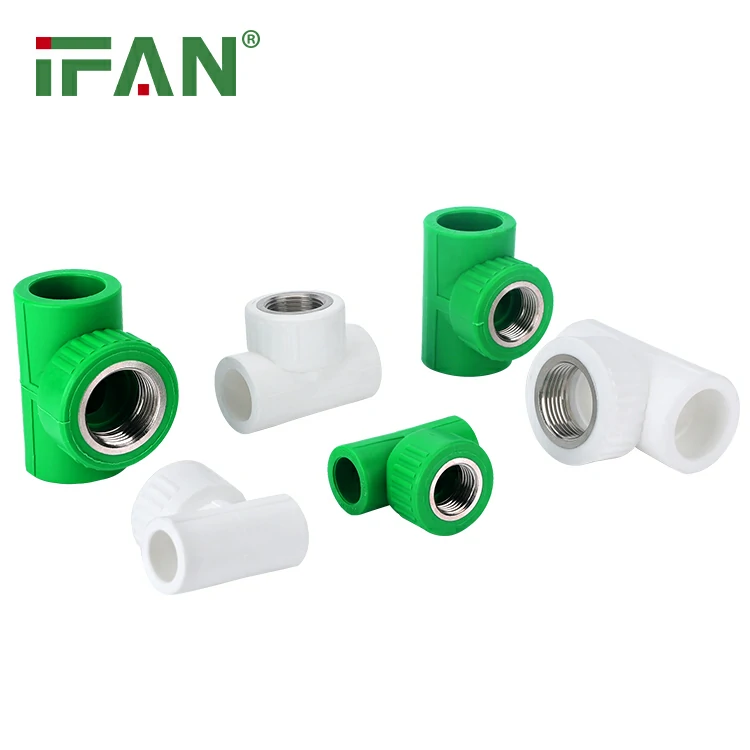
6. Chemical Resistance
If your plumbing system will be exposed to chemicals, such as in industrial applications, it’s essential to select PPR fittings that can handle chemical exposure. While PPR fittings are resistant to many chemicals, some aggressive substances may cause degradation over time.
Always check the chemical compatibility of the PPR fittings with the substances that will flow through the pipes. For systems dealing with corrosive substances, you may need specialized PPR fittings that offer enhanced resistance.
Tip: Verify the chemical resistance of the PPR fittings with the manufacturer if your system will handle aggressive substances.
7. Cost and Budget
While PPR fittings are generally affordable compared to other plumbing materials, the price can vary depending on the brand, quality, and type of fitting. It’s important to balance cost with quality when selecting fittings for your plumbing project.
While opting for lower-cost fittings may seem attractive initially, it could lead to higher maintenance costs and premature system failure. Investing in high-quality PPR fittings can save you money in the long run by ensuring that your plumbing system is durable and reliable.
Tip: Plan your budget carefully and consider the long-term cost savings of choosing durable and reliable PPR fittings.
Common FAQ About Choosing PPR Fittings
1. How do I know which size of PPR fittings to choose?
To determine the correct size of PPR fittings, measure the diameter of the PPR pipes you are using. Ensure that the fitting’s internal diameter matches the external diameter of the pipe to achieve a secure connection.
2. Can PPR fittings be used for both hot and cold water systems?
Yes, PPR fittings are suitable for both hot and cold water systems. They are resistant to high temperatures and can handle water temperatures up to 95°C (203°F).
3. How do I install PPR fittings?
PPR fittings can be installed using heat fusion or threaded connections. For heat fusion, use a heat fusion machine to join the fittings and pipes. If you’re using threaded fittings, make sure to use pipe joint compound to prevent leaks.
4. Are PPR fittings resistant to chemicals?
Yes, PPR fittings are resistant to many chemicals, but their compatibility depends on the specific substances they will come into contact with. Always check the chemical resistance before use.
5. How long do PPR fittings last?
With proper installation and maintenance, PPR fittings can last for several decades, typically up to 50 years or more, making them a durable choice for plumbing systems.
Conclusion
Choosing the right **PPR fittings is essential for the long-term success of your plumbing project. By considering factors such as pipe size, pressure rating, temperature resistance, and quality, you can ensure that your plumbing system is durable, efficient, and reliable. Proper installation and maintenance of **PPR fittings** will contribute to a plumbing system that serves you well for many years. Make sure to do your research, select high-quality fittings, and follow the best practices to achieve the best results for your plumbing project.
Related products
-
PPR Fittings
Easy to Install Brass Fittings for DIY Projects
-
PPR Fittings
Plastic PPR Water Fittings


